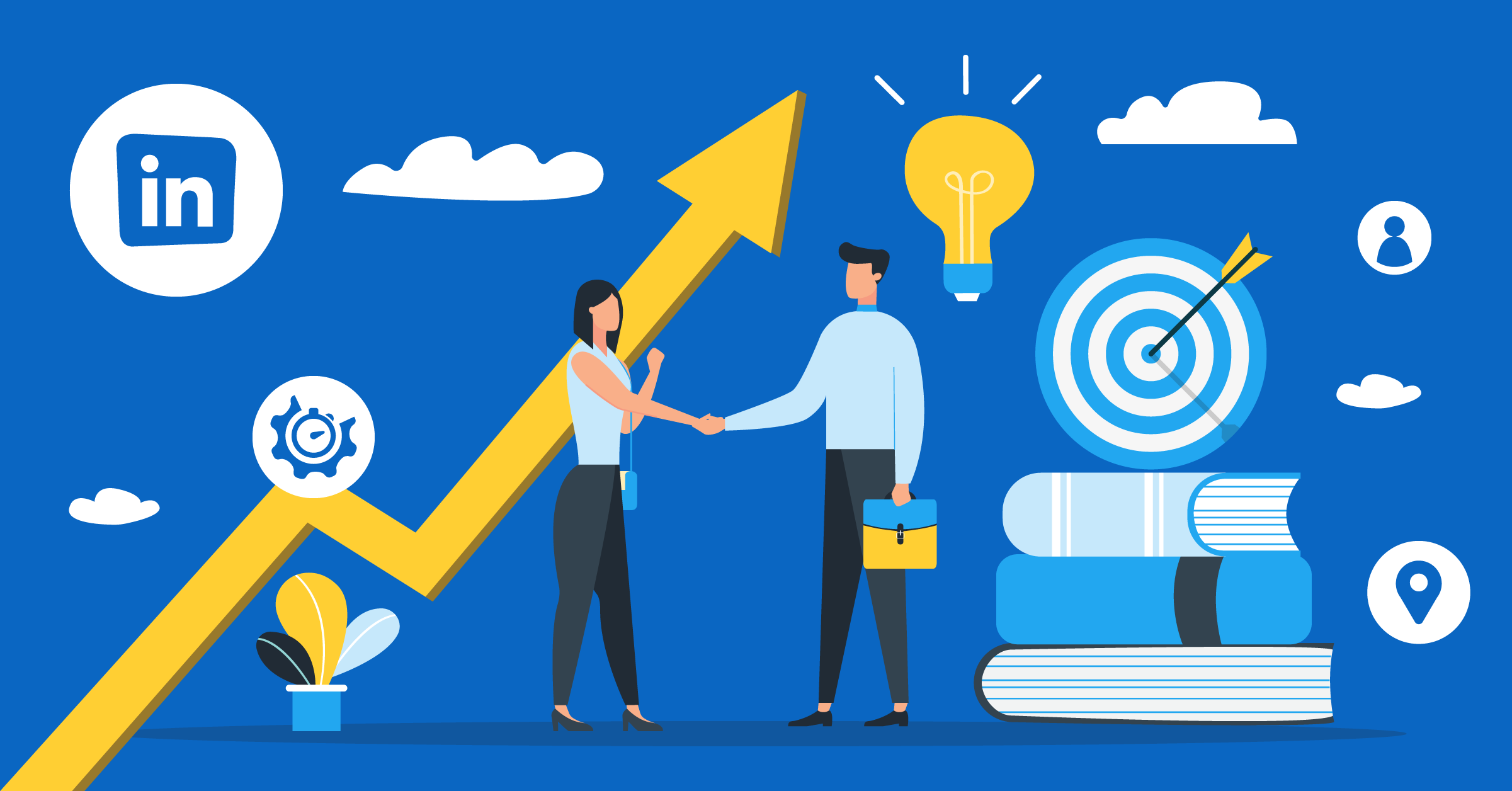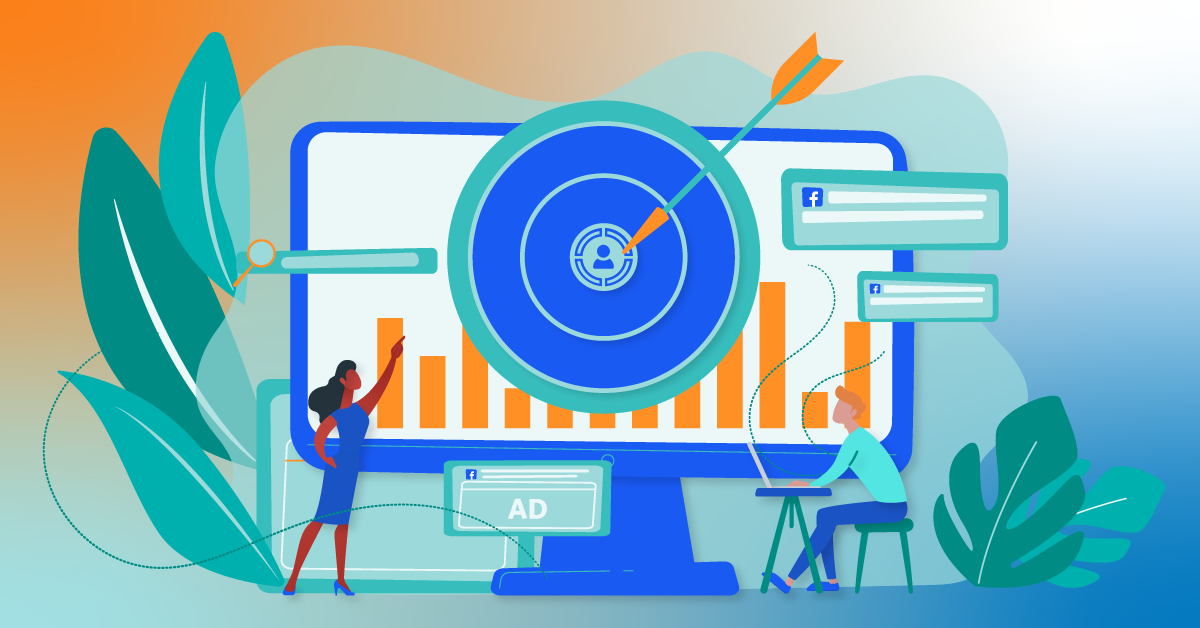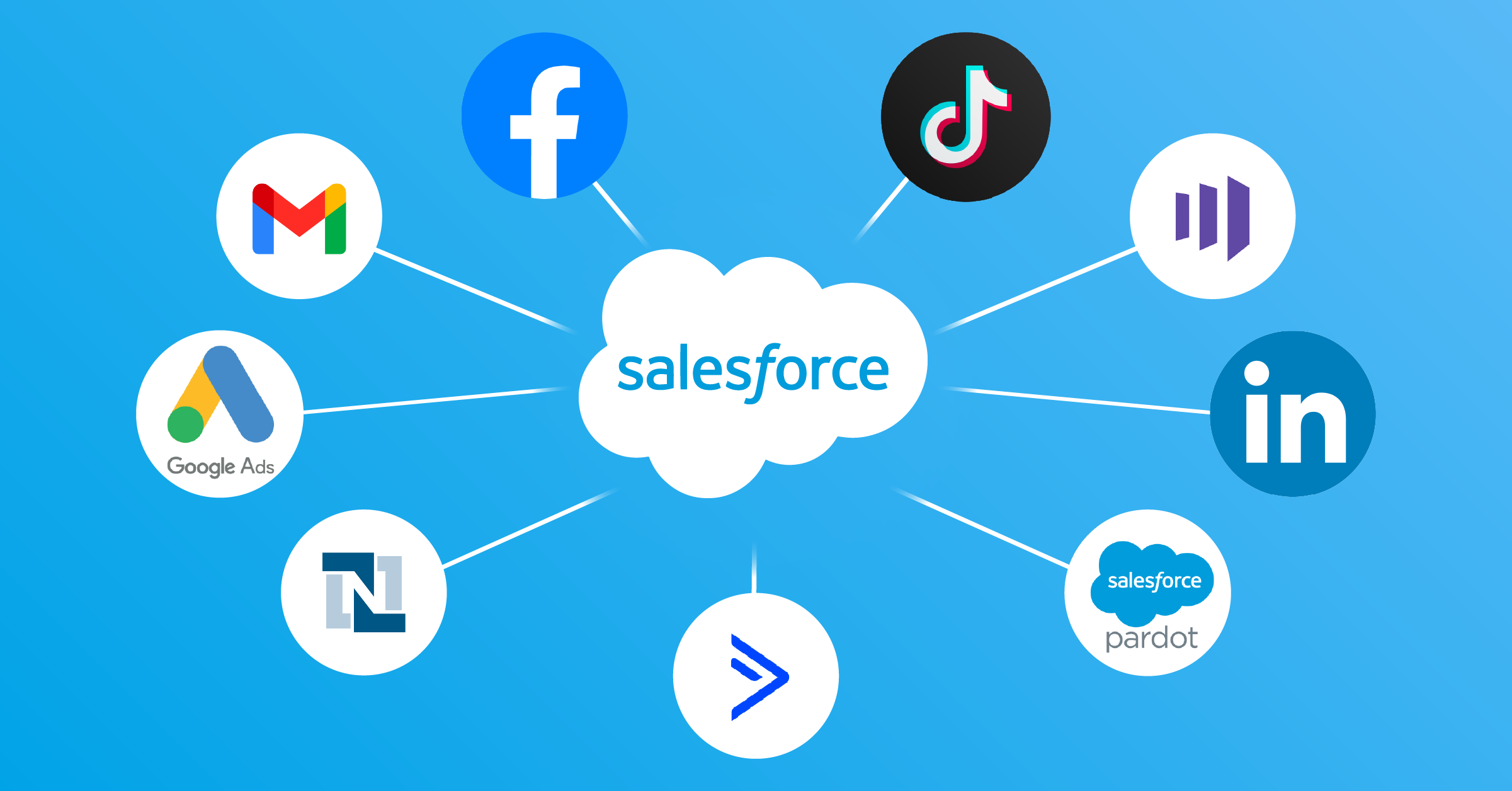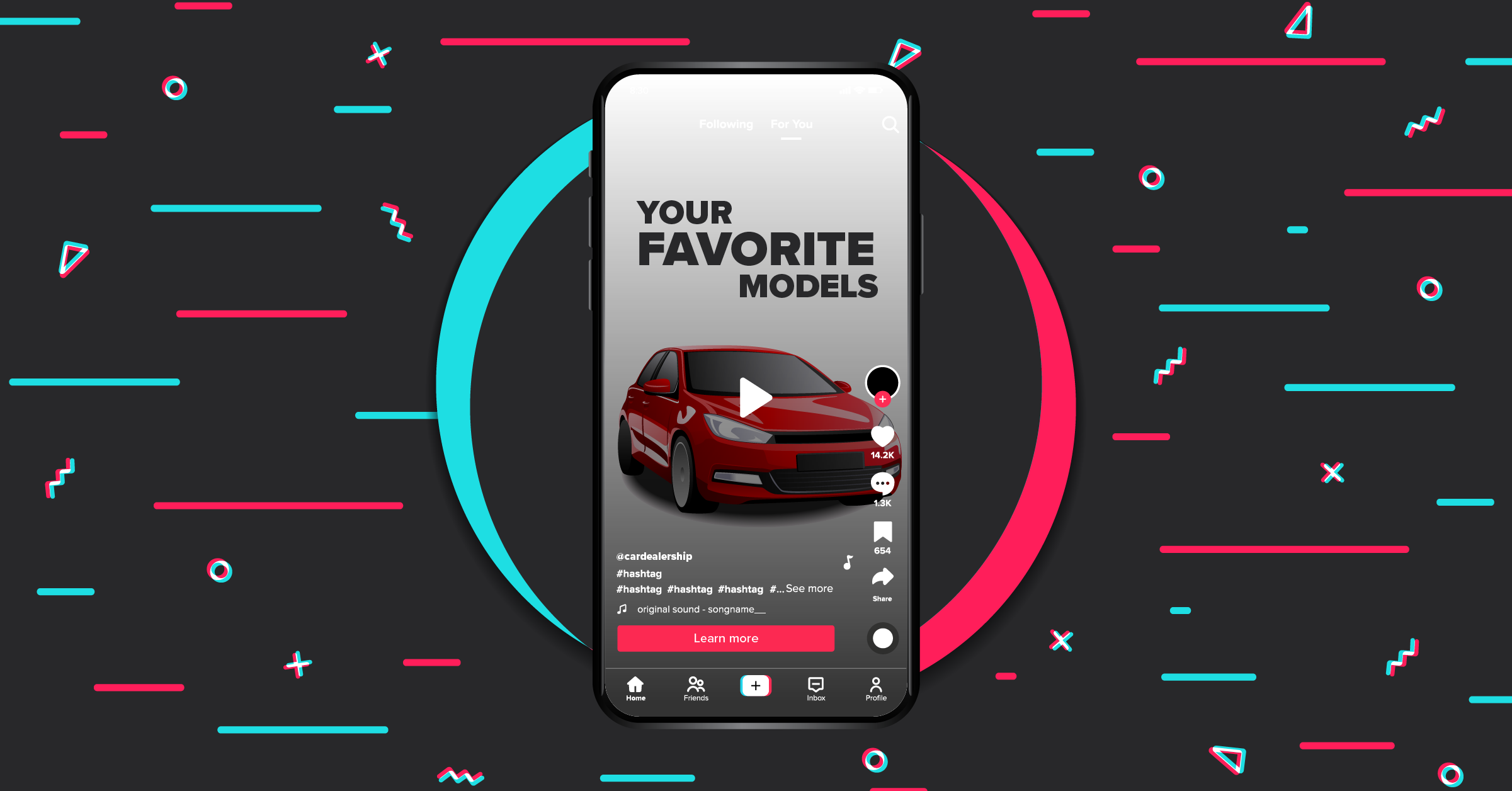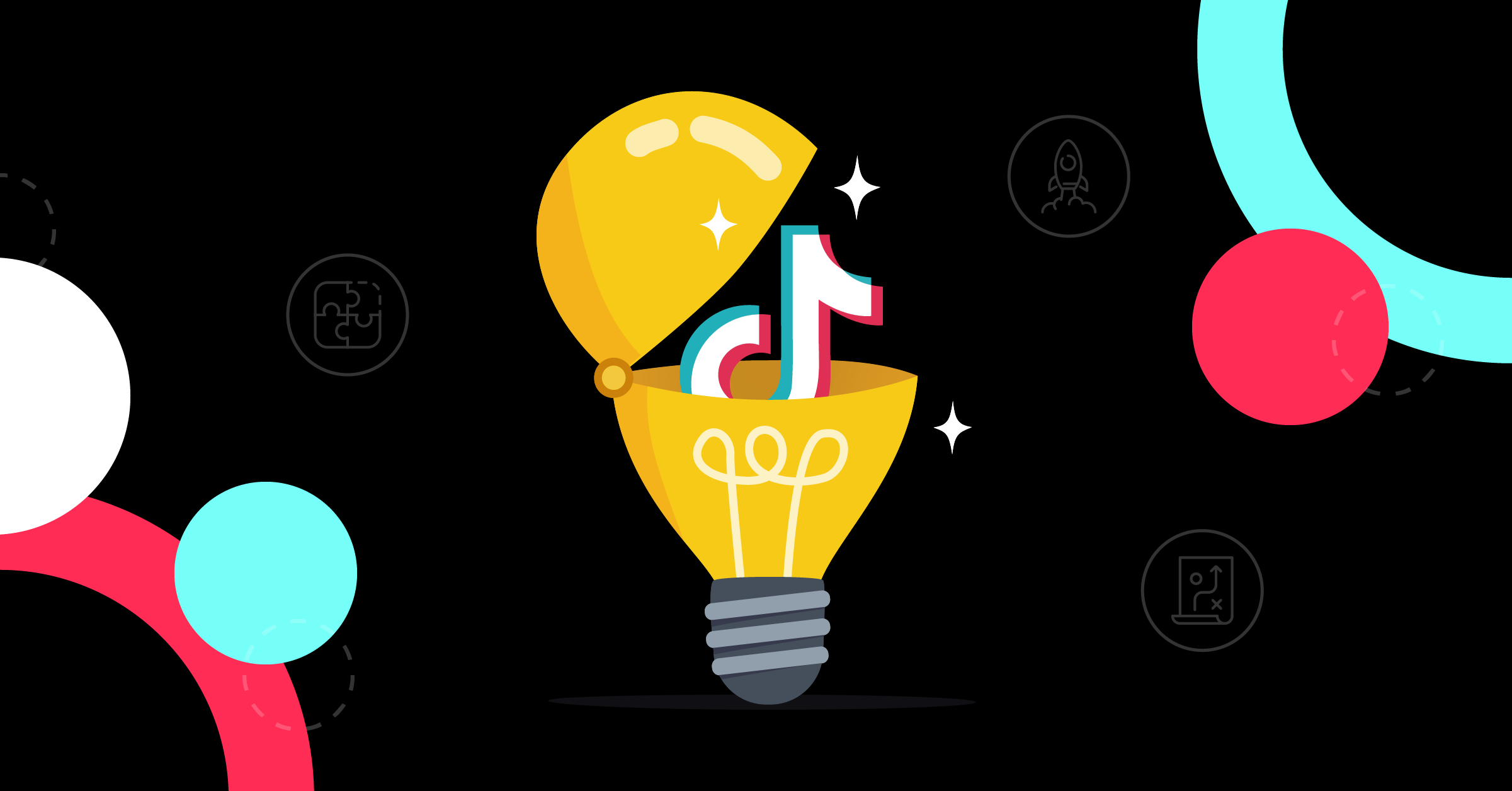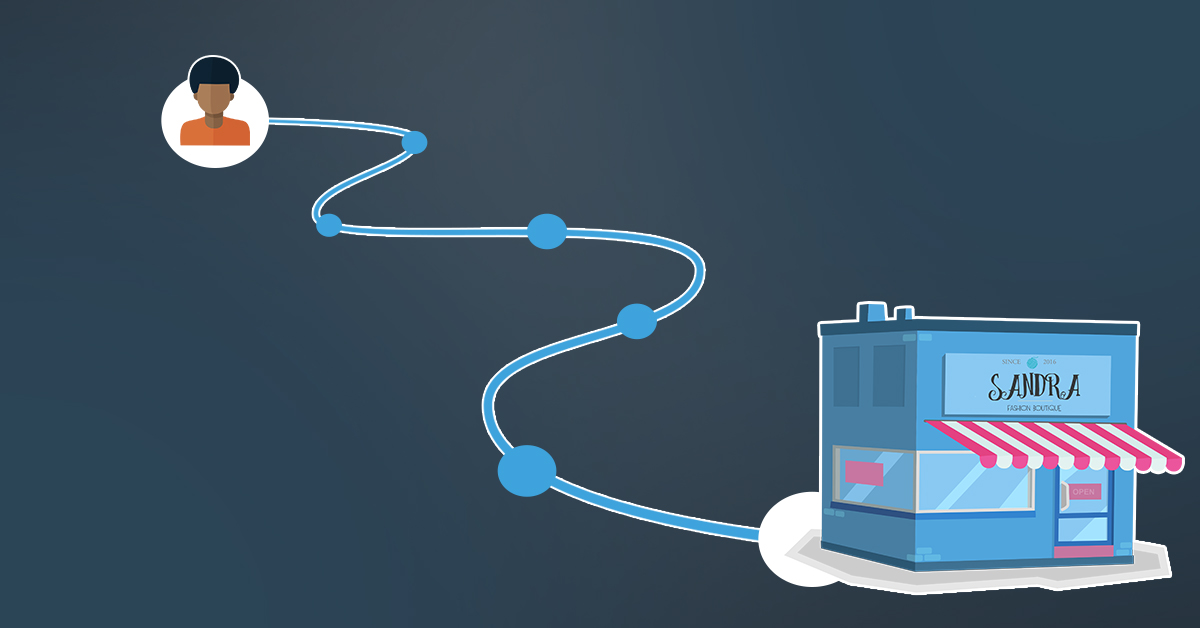
The path buyers take to purchase products or services is not linear. It is full of twists and turns, yet, most businesses have failed to see it. Therefore, they have also failed in delivering the right customer experience and thus, lessen the opportunities to boost sales. This is also the reason most sales reps miss their goals. To succeed in sales today, you need to have an overall knowledge of your prospects and the path they take to make purchases. This is why four in 10 B2B companies worldwide said they believe capturing a complete view of the customer is a big priority in the next two years. This is where the buyer’s journey comes in.
The buyer’s journey gives a complete view of what buyers go through from the stage of knowing there is a need to fulfill, to considering the solution that can fulfill the need and then choosing between the different solutions available.
In this article, you will learn about the buyer’s journey and how you can create one for your business.
What is the buyer’s journey?
HubSpot defined the buyer’s journey as the buyer’s path to purchase. This means that buyers go through some processes before they make up their minds to buy. These stages are known as the buyer’s journey. They include the awareness, consideration, and decision stages.

Source: HubSpot
People don’t just buy things randomly, especially things that add value to their lives. They think, research and plan before they buy. Thus, they are getting better at making informed buying decisions day by day. This is why you need to understand why people would buy your product or service. You need to know the problem your product or service solves. Knowing this will give you an understanding of their pains and how to position your product or service along that path to help solve the problem.
The buying and selling landscape has changed tremendously over the past years. This is because 70% of the buyer’s journey is complete before a buyer reaches out to sales and 74% of B2B buyers do at least half of their research online before making an offline purchase. This has created a shift from being sales process focus to being buyer process focus.
But, do you really need a buyer’s journey for your business.
Below are the reasons you need to use the buyer’s journey for your business.
The importance of understanding your buyer’s journey
i) It helps to sell products or services
Having a buyer’s journey means creating and delivering helpful content for each stage of the journey. This means creating search engine optimized content that will show up on search engines and drive visitors to the content on your website. Visitors will engage with your content and subsequently become leads. From there, you nurture them with more content to become customers.
(ii) It helps to establish communication with the target audience
Having an effective buyer’s journey for your business helps you to communicate effectively with your target audience. This is because you know their needs and what they want. This will help you to reach out to them on the channels they use. For example, you can communicate with them on social media such as Facebook, Twitter, and LinkedIn and also respond to their comments. This, in turn, helps to build lasting relationships with them.
iii) It helps to build trust
When you create content that helps your audience instead of giving them a hard sales pitch, you can build trust in your product or service. Trust is very important in making purchases. This is why 81% of surveyed consumers in a report said that they need to be able to trust the brand in order to buy from them. So, nurturing your leads with the right content according to their stages in the buyer’s journey helps to build trust, which can convert to sales in the long run.
(iv) It offers more personalized experiences. This helps you to provide a seamless and exceptional customer experience and a uniquely personal journey for each prospect. This is why 80% of frequent shoppers only shop with brands that personalize the experience. With personalization, you can drive more sales, growth, and retention.
The three stages of the buyer’s journey
There are three stages of the buyer’s journey: namely awareness, consideration, and decision.

Source: Diginuisance
The Awareness stage of the buyer’s journey
The awareness stage of the buyer’s journey is where the buyer understands that they have a problem and are looking for ways to solve it, but may not be ready to make purchases. They are simply doing research. A Gartner report revealed that when B2B buyers are considering a purchase, the majority (27%) of that time is spent researching independently online. Just 17% is spent meeting with potential suppliers.
Let’s look at an example below:

Source: Business2Community
In the image above is Beth. She needs a running shoe, so she opened her laptop computer to start the buyer’s journey. A study revealed that 81% of shoppers conduct online research before buying and that’s just what Beth is doing. Also, 68% of online experiences begin with a search engine. This is known as the Awareness stage of the buyer’s journey.
At this stage, your goal is to create content that will educate Beth on the best type of running shoes to choose. A blog post can be useful here with the title – 5 Best running shoes for women. The content needs to educate, entertain and inspire Beth to take the required action (which is, to click to the product page).
Let’s look at suitable content types that will attract and entice buyers at this stage.
Awareness stage content examples
The goal of the content at the awareness stage is to generate leads and attract potential clients. Below, you’ll find different types of content best used during the awareness stage.
1. Blog posts
A blog post is a good piece of content for targeting people at the awareness stage. It generates traffic and revenue. A research report revealed that companies with blogs produce an average of 67% more leads monthly than companies that don’t blog. To excel in blogging, you need to know the terms/keywords people are using to search for problems that your product or service can solve. Here, you can use different keyword tools such as the Google keyword tool, answer the public, and SemRush. Use the keywords to create original and high-quality content for your audience.
Search engines like Google will crawl the content to index it on their search result page. When someone types the keyword into the search engine, your content can pop up and they can click on your website to read the content. You will also need to promote the blog posts so that more people can see and read them. To do this, post them on different channels such as social media platforms like Facebook, Google, Twitter, and Instagram. Below is an example of a blog post on our blog that accurately targets the awareness stage of the buyer cycle.

It is a blog post about LinkedIn Lead Gen Forms, a type of ad similar to Facebook Lead Ads for businesses. It educates visitors about the product and how to use it.
If you are looking for more blog post ideas for this stage, check out OptinMonster’s 50 blog ideas you can write about today.
2. E-books and E-guides
E-books and E-guides are great resources for the awareness stage of the buyer’s journey. It is a great opportunity to give valuable content that your audience can easily digest. As you give them the e-book, you can collect their emails in return. HubSpot created an e-book and used it as a lead magnet. It generated 12,000 shares. One great thing about e-books and guides is that they are easy to create. You don’t have to start from scratch. You can combine several posts on the same topics together to create them. However, ensure that the e-book is valuable and packed with useful information and that it addresses one topic that your audience really cares about.
Below is an example of an e-book from LinkedIn. The e-book is used as a lead magnet.
LinkedIn created an ebook on how to use Introducing the sophisticated marketer’s Guide to Thought leadership.

Source: LinkedIn
They also created a series of guides on different topics for users.

Source: LinkedIn
3. Whitepapers
White papers are long-form content written on specific topics. A white paper is an in-depth content that can help to educate buyers about your product or service. According to statistics, 71% of B2B buyers have used white papers in the last 12 months to research purchasing decisions. White papers are fact-based, insightful, and authoritative. While creating a white paper for your business, ensure that the title is catchy, descriptive, and enticing. The tone should be more formal than a blog post and it should have a good design. It should provide value to your audience in order to help them trust your brand. Below is an example of a white paper from HubSpot.

Source: HubSpot
4. Educational videos
Videos help you humanize your brand and build a personal relationship with your prospects. This way, you can easily generate leads and turn them into potential customers. Aberdeen Group says marketers who use video get 66% more leads per year. You can create videos for your product demos, customer stories, presentations, interviews, etc. It is a good addition to your awareness stage content library. Below is an example of an educational video from OptinMonster.

Source: OptinMonster
They created the video to show potential customers how to create a video pop-up to boost engagement.
5. Social media posts
The social media platform is a place where you can share content from your blog and interact with your audience. It is effective in generating leads and sales. Recent statistics show that there are 3.78 billion social media users worldwide in 2021. Also, 73% of marketers believe that their efforts through social media marketing have been ‘somewhat effective’ or ‘very effective’ for their business. All you need do is create content specifically for your audience and share it on the platforms. You can also create shorter posts to create awareness for your products and services. Below is an example from Adidas.

Source: Twitter
They shared a tweet to create awareness for their adidasallday app.
Now that you know the content that will resonate with your audience at the awareness stage, it is time to move on to the consideration stage.
The consideration stage of the buyer’s journey
The consideration stage is the stage where the buyer has done their initial research and comes up with different options to choose from. At this stage, the buyer still needs more information to help them make an informed decision. Using the same example above, Beth made some choices of running shoes, but she needs to be sure of her decision. So, she searches for customer reviews. A research report revealed that 88% of consumers say they trust online reviews as much as personal recommendations. Also, 97% of people say they rely on peer recommendation and ratings/reviews during the buying cycle. This is because reviews are from real people who have used the product. Beth also looks for coupons and discount codes for the product.

Below is the content you can create for the consideration stage of the buyer’s journey.
Consideration stage content examples
At this stage, you need to create content that shows how you’ve helped others solve the same problem that your prospects want to solve. Tell them the results your current customers have achieved to encourage prospects to do business with you. There are three main content types for the consideration stage of the buyer’s journey, they are – product comparison guides, case studies, and webinars.
1. Product comparison guides
A product comparison guide is essential for the consideration stage, as the prospect is considering the options available to solve the problem at hand. A product comparison guide shows the prospects the features of your product or service, the levels involved, and the cost. This helps prospects to know if your product or service is a good fit for them. For example, this is how our product comparison page looks like in LeadsBridge.

2. Case study/success stories
A case study is suitable for the consideration stage as it helps to convince readers that the solution you sell works. An effective case study will contain the problem the user is trying to solve and how your product or service helps to achieve the desired result. The Content Marketing Institute and MarketingProfs report revealed that 73% of B2B marketers are currently using case studies because they are reliable when evaluating services.
Below is an example of the case studies/success stories we have at LeadsBridge.

3. Webinar
Webinar marketing is often one of the best ways you can educate prospects and leads about your products or services. It is also an effective way to connect with a larger online audience and improve your lead generation strategy. In a research carried out by the branded solopreneur, it was discovered that on average, 2% to 5% of webinar attendees will buy from your business. This is why 42% of marketers say that they plan on using webinars in 2021.
Below is an example of webinars from Marketo.

Source: Marketo
Here are blog posts to help you learn more about webinars:
1. 7 bulletproof techniques to make your webinars lead to massive results
2. How to create an attractive webinar for your audience and convert it into hot leads
The Decision Stage of the Buyer’s Journey
The decision stage is a stage where the buyer decides to finally make a purchase after the research, comparisons, and reviews. At this point, they have narrowed down their options and are ready to make a purchase. Using our example, Beth – She found a great deal on one product and she decides to buy. However, before she made the purchase, she ensures that the company has a shipping and return policy in place, trust and security indicators, and payment options.

These are all the things you need to have on your product or service website to encourage prospects to make purchases. This is why we include trust and security indicators on our website at LeadBridge. See them below.

Decision stage content examples
There are three reliable content types for the decision stage of the buyer’s journey. They are – Live demo / free trial, consultation offer, and coupon.
1. Product demo
A product demo is a great way to show your prospect how your product or service works. This is the same tactic that car dealerships use. They call it a test drive. It gives the prospects the opportunity to feel the car and test the different components before they make purchases. Product demo makes selling very easy because 72% of people would rather use video to learn about a product or service. Below is a good example of a product demo from Airtable.

Source: Airtable
Airtable created a video showing how their product works and who it is designed for. It shows various use cases that will help attract leads to become customers. Utilizing a product demo tool like Consensus enables the creation of these videos. For more advanced features such as interactive, guided, and live demos, feel free to explore alternatives to Consensus.
2. Consultation offer
Offering a consultation is a great way to convert leads to customers at the decision stage. This works for companies that thrive on establishing a strong bond with their customers. This includes professional services and businesses that sell online courses.
A free consultation gives you an opportunity to meet with the prospect one on one. This where you can use your professionalism to dispel their fears and confusions and also encourage them to buy from you. Below is an example from Unbounce, a landing page building platform.

Source: Unbounce
Looking for how to integrate Unbounce with third-party tools, Leadsbridge offers integration with Unbounce. Check it out!
3. Coupon / Discounts
A coupon is a good option in closing deals in the decision stage, and a lot of prospects look for it because it helps to reduce the real cost of the product. It helps prospects to buy the product they love at a better price. This is why 88% of respondents of a survey carried out said they use coupons when shopping.
Below is an example of a coupon/discount from Kate Spade, a fashion store in the U.S.

Source: Wordstream
Now that you know the three stages a buyer goes through and the type of content to create for them at each stage, it is time to look at buyer journey mapping.
What is buyer journey mapping?
Buyer Journey Mapping is mapping out the process a buyer goes through from the awareness stage to where they make purchases. Having a buyer’s journey map helps you to understand your prospects and gives them the experience they deserve.
Below are the benefits of creating a buyer journey mapping for your business.
- Creating a buyer journey map for your business gives your marketing team a path to follow in order to easily convert prospects to customers.
- A buyer journey map increases your bottom line. A research carried out by the Aberdeen Group revealed that businesses that use buyer journey maps average a 79% increase in cross-selling and upselling revenue compared to organizations that do not.
- It helps you to know the smallest actions that customers take that can have a huge impact on whether or not they purchase your product or service.
- A buyer journey map will help you know what your prospects want to know and when they want to know it. With this information, you can create timely content and conversations that will help you convert them at the right time.
- Buyer journey mapping helps to increase customer retention rate. About 33% of customers will consider switching brands after just one poor experience. A look at your buyer’s journey map will reveal areas where you need to improve and with improvement comes fewer customer pain points and retention.
Now that you know the benefits of creating a buyer journey mapping, it is time to learn how to create one for your business.
Below is an example of a buyer’s journey map.

Source: Lucidchart.
This is an example of a simple, straightforward customer journey map based on an individual customer’s (or customer persona’s) experience.
How to create a buyer journey mapping
Today’s buyers go through different stages before they make purchases. This includes gaining awareness of brands, researching companies’ products, making purchases, and receiving a thank you note in their email. It is not easy to predict these stages, hence the need to create a buyer journey mapping for your business. Below is the step-by-step process of creating a buyer journey mapping.
1. Create a buyer persona
The first step in creating a buyer journey mapping is to create a buyer persona if you don’t have one already. A buyer persona represents your target customer, their interest, and behavior as they interact with your business. Knowing your buyer persona makes it easy to create helpful content that addresses their needs.
Below is an example of a buyer persona.

Source: Xtensio
If you look closely at it, it has different information such as the goals, frustrations, motivations, age, work, location, and salary. The question is, where will you get all this information to create a buyer persona? Find the answer below.
i). Do you have past customers? Then send out a survey to them and collect their data. Don’t know how to create a survey? Read this article – How to create a customer survey.
Below are some questions you can ask:
- How did you hear about us?
- What are the problems you want to solve?
- Have you ever bought anything from us? If yes, how did you decide?
- Have you ever interacted with the content on our website, intending to buy our product, but you changed your decision, what led to the change?
- Is it easy to navigate our website? Yes or No.
Above are questions that will help you to further get to know your prospects.
ii) Use Google analytics
Google analytics contains enormous data that you can use to create your buyer persona. Follow the steps below to get the data.
a. Age and Gender
To get the age and gender of your audience, on your Google Analytics dashboard, go to the audience tab, demographics and click on overview.

In the image above, you can see that females are 72% and males are 27.1% and within the age range of 25-34. Now, let’s look at their language and locations.
b. Geo
Under the audience tab, click on overview and then click on Geo. Then click on language.

Click on the location to see where they are located.

Now that you know their age, gender, language, and location, let’s check out their interests.
c. Affinity
To add more details to the persona, click on interest and then affinity as shown below.

Here, you can see the interests of the target audience. They love shopping, beauty & wellness, Lifestyles & Hobbies, etc. Let’s check out the kind of product they like to buy.
c. In-market
Click on in-market to see what kind of product they are interested in purchasing. Here you can see they are searching for baby products, apparel, real estate, etc.

The details above can give you enough information about what kind of product to sell on your website and the content that will be useful to your audience.
Collate the information from a – d to create your buyer persona.
iii). Make educated guesses about your ideal customers
If you don’t have existing customers or much data in your Google Analytics, you can still get to create your buyer persona. What you can do is to make educated guesses about your ideal customers. In doing that, answer the following questions:
- Who are your ideal customers?
- How does your product improve your ideal customer’s life?
- What are the benefits and features of your product
- What is the location of your ideal customers?
- When will your ideal customers purchase your product?
- What process will they follow in buying your product?
When you answer the questions above, you can add the responses to your buyer persona.
iv). Look at your competitor’s buyer persona
The fourth and easiest way to create a buyer persona is to look at your competitors’ buyer persona. They have been in the business before you and have done what you are trying to do. Look at their content, and you will understand their customer’s pain points and how they intend to solve them.
One tool you can use to create a buyer persona is the Xtensio tool. It has different templates you can edit to create your own buyer persona.
The next thing is to look at the buyer persona’s journey by finding out what they need.
2. Know the buyer’s needs
Now that you have created the buyer persona of your ideal customer, the next thing to do is to know what the buyer needs. You can do this by using lead nurturing questions. Send polls and surveys to know where they at the buyer journey. Find out what your ideal customer needs from your product. For example, at LeadsBridge, we sell integration tools, so our ideal customer is someone looking for how to connect one software to the other. For example, the prospect might be looking for how to connect Facebook Lead Ads with the CRM or Autoresponder. So, they need a third-party integration to help connect Facebook Lead Ads to the CRM.
The next step is to deal with the common objections on the buyer’s journey mapping
3. Find out common objections and deal with them
Of course, the buyer’s journey mapping is not a straight line. There can be roadblocks that will prevent the prospects from making purchases. You need to list out all the objections a potential customer will encounter in your buyer journey mapping. Sure, they will have constraints and frustrations that will affect the decision-making. Using LeadsBridge’s example above, a common constraint of our prospective customers can be the learning curve or the onboarding process of our tools.
When you know the objections that prospects can encounter on the buyer’s journey, add them to the buyer’s journey mapping and also specify how you intend to solve them.
In the example above, at LeadsBridge, we created videos that teach our prospects how to install and use our products. This makes it easy for them to consider purchasing the products. Find an example below:
4. Map your content to the buyer’s journey
Assuming you have blogs or other content on your website, it is time to map your content to fit into the buyer persona’s journey. Take a holistic look at your content library and decide where each piece of content fits in a buyer’s journey. You will want to consider the content that helps to create awareness for your products, the content that addresses the pain points of your prospects, and the content that solves and sells your product to the prospect. Now, let’s look at our blog at LeadsBridge again and bring out the articles. We have a list of articles on CRM integration because it is part of our products.
1. What is CRM integration? Definition and Strategies. This content fits the awareness stage of the buyers’ journey.
2. CRM Solutions: 12 Great Tools to try in 2021. This is suitable for the consideration stage of the buyers’ journey.
3. How to integrate Zoho CRM with Facebook Lead Ads. This is good for the decision stage of the buyer’s journey.
Find out where each of your content fits into the three stages of the buyers’ journey and identify any gaps. For instance, if you have more awareness and decision stage content but have little of the consideration stage content, create more to fill in the gap.
5. Use a CRM system + Integration
Using a CRM system such as Zoho, Salesforce, and HubSpot will give you the opportunity to track the path of each of your customers. It helps you to store the history of interactions with brands and monitor transaction progress. You can also integrate Zoho, Salesforce, and HubSpot with your favorite tools using Leadsbridge. Not only that, you can connect your social media accounts such as Facebook and LinkedIn to your CRM through LeadsBridge, especially if you want to create ad campaigns.
For example, you can connect your Facebook Leads Ads with your CRM of choice, such as HubSpot so that as leads come in, they are funneled directly to your CRM.
The same goes for LinkedIn Lead Form Extensions. This way, you maximize your efforts and time and get the best out of the tool.
6. Use marketing automation
HubSpot defined marketing automation as “using software to automate marketing activities”. With automation, you can automate common tasks such as email marketing and social media posting. Marketing automation helps to increase productivity as you will have time to pay attention to more demanding tasks in your business. It improves customer retention because you can keep on communicating with your audience for as long as you want. A study revealed that 77% of companies that use marketing automation see an increase in conversions and that marketing automation for small businesses reduces marketing overheads by 12.2%. You can automate different tasks such as
a. Syncing leads with your CRM through a third-party app like LeadsBridge. Sync your leads from Facebook, LinkedIn, Google Ads, etc to your CRM using LeadsBridge integrations.
b. Personalize communication with customers
c. Nurture leads with an email campaign workflow
d. Schedule social media posts, etc.
Buyer journey mapping examples
Below are examples of the buyer’s journey map from different industries.
1. UXhints.com

Source: Uxhints
The buyer journey mapping above shows the three stages of the buyer journey i.e. awareness, consideration, and conversion (acquisition). It highlights what the prospects want to achieve, their thought, actions, feeling, pain points, and opportunities. It is a complete buyer journey mapping.
2. Preact

Source: Slideshare
The Preact buyer journey mapping example uses a different approach. It shows the lifecycle stage of the prospect, the touchpoints, frustrations, metrics, and improvement opportunities.
3. The automotive customer journey map

Above are the stages an automotive prospect will go through. For more details, check out this blog post – Automotive Customer Engagement.
4. Online travel company

Source: cmswire
The online travel buyer journey mapping takes a different approach by adding more stages to the journey. It includes the customer needs and activities, expectations for online travel agency, emotional state of personal and potential opportunities for improvement.
Sales funnel vs Buyer journey
The sales funnel and the buyer’s journey is not the same, although they may look similar. The sales funnel is a diagram that shows the journey that buyers follow from being visitors to customers.

Source: Martech.zone
The top of the funnel shows the group of people who are still doing research and are not ready to make purchases yet, while the bottom represents people who are ready to make purchases.
The buyer’s journey, as defined above, is the stages a buyer goes through from awareness, through consideration, to conversion.

Source: Intelligentmarketing
The first difference between the sales funnel and the buyer’s journey is the perspective. The buyer’s journey is from the perspective of the buyer. They know they need to solve a problem; they search for the solutions and make decisions without consulting the business. The buyer is not concerned about the company as much as they are about their goal to solve their problems. So, it is buyer-centric.
On the other hand, the perspective of the sales funnel is from the company. They are concerned about moving prospects from the top of the funnel to the bottom of the funnel, where they become customers. Therefore, it is more company-centric.
Second, the buyer’s journey shows how close a buyer is to buying, while the sales funnel looks at how close the buyer is to purchase from a specific company.
The relationship between buyer personas, buyer journeys, and sales funnels
The buyer persona is the people you are targeting, i.e. your target audience. The buyer persona is very important to your marketing efforts. They help in segmenting and targeting marketing messages based on the industry, geography, interest, and characteristic of your audience. With this, your audience can better relate to your product or service according to their needs.
The buyer’s journey specifies what stage you are targeting the prospects. Your content should be found in the awareness, consideration, and decision stages of the buyer’s journey.
The sales funnel is the stage where you predict revenue according to the stage the buyer is and how close they are to making purchases.
Conclusion
The buyer’s journey is an essential part of marketing that cannot be overlooked. You need to know your buyer persona in order to create outstanding content that is useful to move them from awareness to consideration and conversion. This is where the buyer journey mapping comes in. Map different content to the stages of the buyer’s journey to get maximum conversion.
In creating the buyer’s journey mapping, ensure that you use automation to make your work easier. You may want to integrate your tools together through LeadsBridge, to ensure a proper nurturing process. LeadsBridge has lots of integrations for different tools such as CRMs like Zoho, Salesforce, and HubSpot. Also available are integrations for autoresponders like ActiveCampaign and MailChimp.



